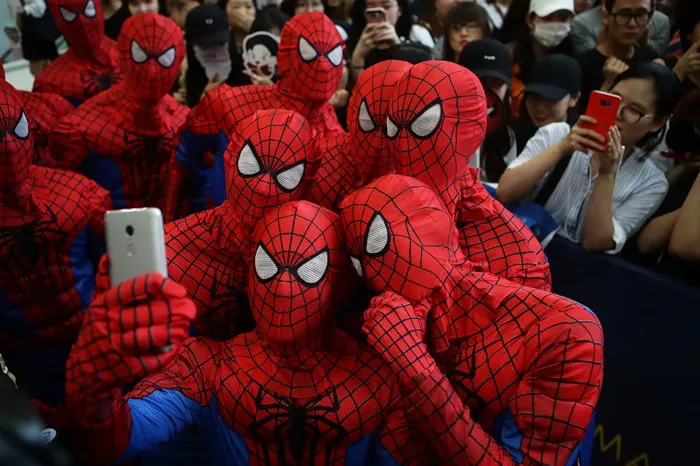Music, a universal language that transcends borders and connects people across cultures, has undergone a fascinating metamorphosis throughout the ages. From the primal beats of early percussion instruments to the intricate melodies of contemporary genres, the evolution of music reflects the changing dynamics of society, technology, and artistic expression. In this exploration of how music has changed over time, we will delve into key epochs, examining the shifts in styles, instruments, and cultural influences that have shaped the musical landscape.
Ancient Rhythms and Melodies: The Dawn of Music
The origins of music trace back to the dawn of humanity, where early humans communicated through simple vocalizations and rudimentary percussion. The beating of drums, clapping of hands, and chants formed the primal foundation of musical expression. How has music changed over time from these elemental beginnings? The transition from oral traditions to the advent of written notation marked a significant shift. Ancient civilizations, such as the Greeks and Romans, introduced more structured musical systems, laying the groundwork for the intricate compositions that would emerge in later centuries.
Medieval Harmony: Sacred Sounds and Courtly Tunes
As societies evolved, so did music. The medieval period witnessed the rise of sacred music in churches and cathedrals, featuring elaborate choral arrangements and monophonic chants. Simultaneously, the courts of kings and nobles fostered the development of secular music, introducing instruments like the lute and harp. The emergence of polyphony, where multiple independent melodies coexisted, transformed the sonic landscape. How has music changed over time during the medieval era? The dichotomy between sacred and secular music laid the foundation for the diverse musical genres that would follow.
The Renaissance: A Rebirth of Artistic Expression
The Renaissance era ushered in a cultural reawakening, impacting all forms of art, including music. Composers began experimenting with new harmonies, and the printing press enabled the widespread dissemination of musical scores. The rise of humanism emphasized the individual, and this was reflected in music through the exploration of personal expression and emotional depth. The lute, recorder, and early forms of the violin gained prominence, diversifying the instrumental palette. How has music changed over time during the Renaissance? The era marked a shift towards a more expressive and individualistic approach, setting the stage for the rich musical tapestry of subsequent centuries.
Baroque Brilliance: Ornate Compositions and Instrumental Mastery
The Baroque period, characterized by ornate compositions and virtuosic instrumental performances, represented a departure from the restraint of the Renaissance. How has music changed over time during the Baroque era? Composers like Bach, Handel, and Vivaldi brought forth masterpieces featuring intricate ornamentation, dramatic contrasts, and the advent of opera. The harpsichord, violin, and cello became central to orchestral arrangements, showcasing the growing importance of instrumental music. The Baroque era laid the groundwork for the classical forms that would dominate the subsequent musical landscape.
Classical Elegance: Symphonies, Sonatas, and String Quartets
The Classical period, spanning roughly from the mid-18th to early 19th century, marked a shift towards clarity, balance, and emotional restraint. How has music changed over time in the Classical era? Composers such as Mozart, Haydn, and Beethoven crafted symphonies, sonatas, and string quartets that emphasized structure and form. The piano emerged as a dominant instrument, and the orchestra evolved into a standardized ensemble. The pursuit of balance between melody and harmony, coupled with the rise of public concerts, democratized access to music, making it an integral part of civic life.
Romantic Revolution: Emotion, Individualism, and Nationalism
The 19th century witnessed the Romantic era, a period characterized by a rebellion against the constraints of Classicism and a celebration of individual expression. How has music changed over time during the Romantic period? Composers like Beethoven, Chopin, and Tchaikovsky infused their works with intense emotion, pushing the boundaries of tonality and form. Nationalism also played a significant role, with composers drawing inspiration from folk melodies and cultural identities. The orchestra expanded, incorporating new instruments and embracing a more dynamic and expressive range.
Jazz: A Syncopated Revolution
The 20th century brought about seismic shifts in musical expression, and one of the most revolutionary genres to emerge was jazz. How has music changed over time through the influence of jazz? Originating in the African American communities of New Orleans, jazz introduced syncopation, improvisation, and a distinctive rhythmic vitality. Figures like Louis Armstrong, Duke Ellington, and Miles Davis pioneered jazz in its various forms, from swing to bebop. The genre not only transformed the American musical landscape but also had a profound impact on global music, influencing everything from rock to hip-hop.
Rock ‘n’ Roll and the Birth of Youth Culture
The mid-20th century witnessed the explosive rise of rock ‘n’ roll, a genre that became synonymous with rebellion and youthful exuberance. How has music changed over time with the advent of rock? Pioneered by artists like Elvis Presley, Chuck Berry, and Little Richard, rock ‘n’ roll blended elements of rhythm and blues with a rebellious attitude. Electric guitars took center stage, and the emergence of youth culture shifted the focus of popular music. The genre’s impact transcended music, influencing fashion, social attitudes, and even politics.
The Electronic Revolution: From Synthesizers to EDM
The latter half of the 20th century saw the rapid evolution of electronic music, propelled by advancements in technology. How has music changed over time with the rise of electronic genres? The introduction of synthesizers, drum machines, and computer-based production revolutionized the creation and consumption of music. Electronic Dance Music (EDM) emerged as a global phenomenon, with DJs and producers becoming cultural icons. Genres like techno, house, and trance reshaped the dancefloor experience, and the accessibility of digital tools democratized music production.
Hip-Hop: From Bronx Streets to Global Dominance
The late 20th century gave birth to hip-hop, a genre that originated in the Bronx and evolved into a global cultural force. How has music changed over time through the influence of hip-hop? Rooted in African American and Caribbean communities, hip-hop introduced a new form of expression through rap, DJing, breakdancing, and graffiti art. Artists like Grandmaster Flash, Run-DMC, and later, Tupac Shakur and The Notorious B.I.G., brought social commentary and urban narratives to the forefront. Hip-hop’s influence extended beyond music, shaping fashion, language, and societal norms.
The Digital Age: Streaming, Diversity, and DIY Culture
As we enter the 21st century, the digital revolution has profoundly transformed how music is created, distributed, and consumed. How has music changed over time in the digital age? The advent of streaming platforms has reshaped the music industry, providing unparalleled access to a vast array of genres and artists. Social media has given independent musicians a platform to showcase their work, fostering a DIY culture. The democratization of music production tools has empowered artists to experiment with diverse styles, leading to a rich tapestry of genres that defy easy categorization.
Conclusion: A Tapestry of Evolution
In tracing the evolution of music over time, we witness a remarkable journey that reflects the dynamic interplay of culture, technology, and individual creativity. From the primal beats of ancient rituals to the intricate melodies of the digital age, each era has left an indelible mark on the musical landscape. As we ponder how music has changed over time, we recognize that it is a living, breathing entity that continues to evolve, offering endless possibilities for future generations of artists and listeners alike.



























